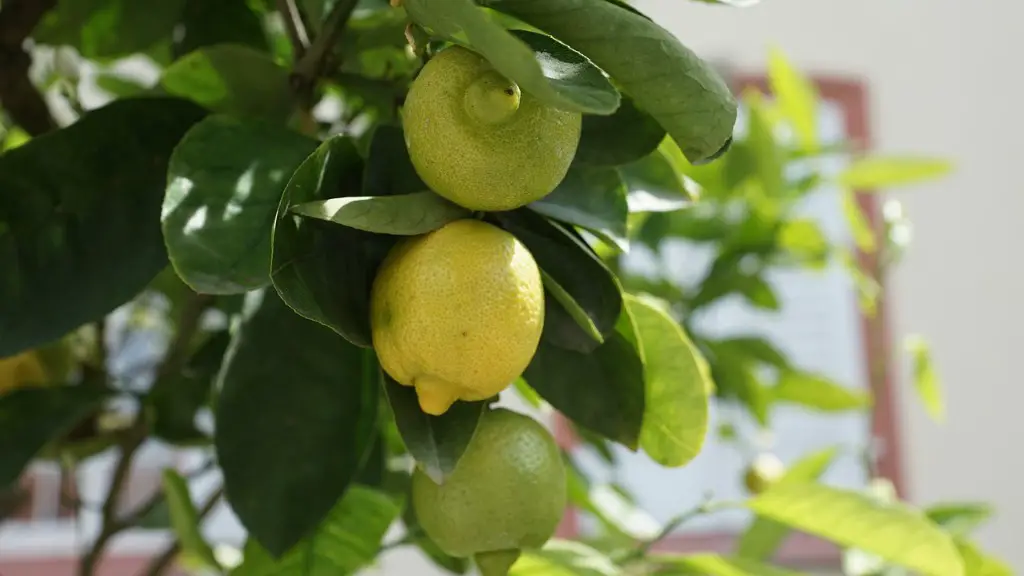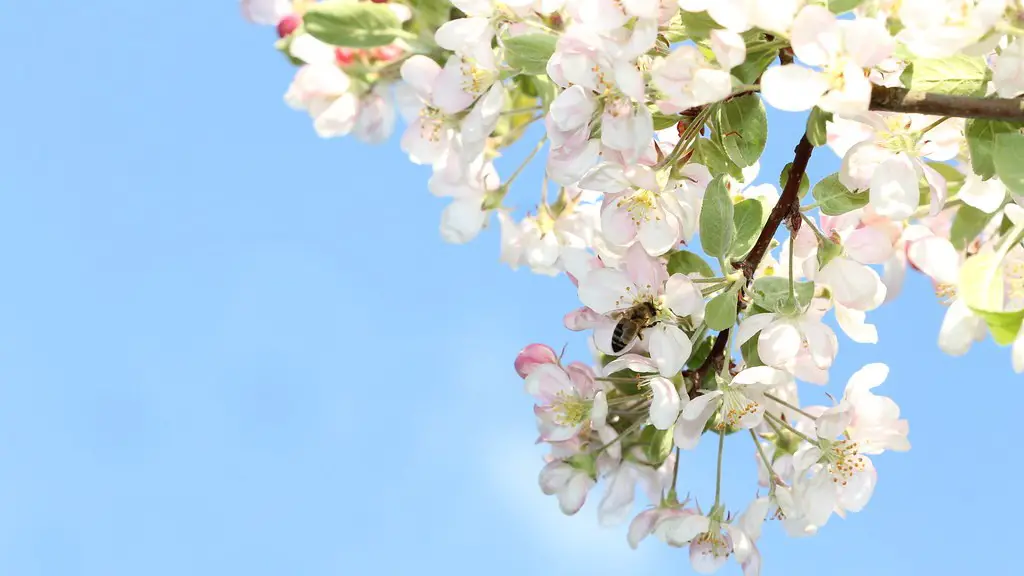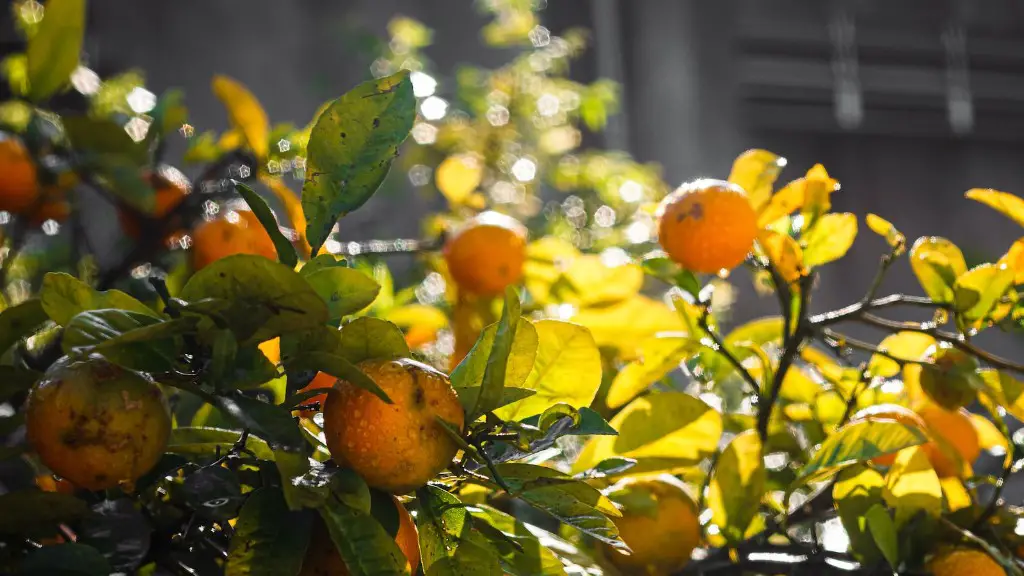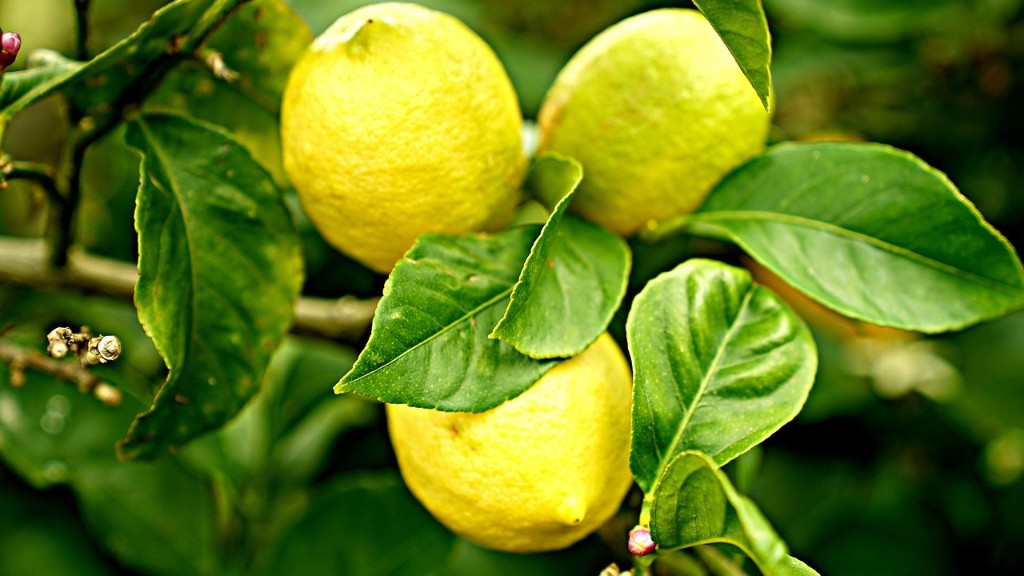Watering a lemon tree is essential to its health and productivity. The frequency of watering will vary depending on the tree’s age, the pot size, the type of soil, the weather, and other factors. A good rule of thumb is to water the tree when the top inch of soil is dry.
During the summer, water your lemon tree every 7-10 days.
How do I know if my lemon tree needs water?
If the soil of your lemon tree is dry to the touch 2-3 inches below the surface, it’s time to water.
Lemon trees typically need an inch or two of water applied once or twice weekly. Container-grown lemon trees typically require watering more frequently. They may need to be watered every day or two if grown outdoors during hot weather. Lemon tree watering is different for older trees in the ground.
Can you overwater a lemon tree
If you have a lemon tree, it’s important to make sure that you don’t give it too much or too little water. Excessive or insufficient water can both kill your tree.
If you have poor draining soil, when the tree gets water-soaked for a long time, the soil gets damp and stays wet. This can cause the tree to acquire fungus or disease, which may result in yellow curled leaves, decayed roots, and the tree may not recover.
Lemon trees are sensitive to overwatering, so it is important to water your lemon tree only when the top two inches of the soil have dried out. When you do water your lemon tree, be sure to give it a generous amount of water. Lemon trees require more water in the summer and should be watered less often in the winter to avoid root rot.
What does an overwatered lemon tree look like?
A tree with yellow or cupped leaves, or leaves that don’t look perky AFTER watering can indicate excessive watering and soggy roots. Give your tree water less often. Citrus prefer infrequent, deep watering to frequent, shallow sprinklings.
Lemon trees are great indoor plants because they require very little maintenance and can tolerate a wide range of light conditions. They should be placed in front of a south-facing window or in another location that receives direct sunlight for at least six to eight hours per day. Lemon trees need well-drained, moist soil and should be fertilized regularly to produce healthy fruit.
How do I know if my citrus tree is overwatered?
If you notice any of the above signs, it’s likely that you are overwatering your tree. Start by cutting back on watering and see if the signs improve. If they don’t, you may need to consult a professional to get to the bottom of the problem.
There are a few reasons why leaves may turn yellow in winter, but the most common one is lack of nutrients. When the tree is cold, its roots are unable to absorb enough nutrients to keep the leaves green, and in turn go yellow. Another possibility is too much sun exposure, which can cause the leaves to bleach. If you suspect either of these is the case, try moving your tree to a more sheltered location or giving it additional fertilizer.
How do you take care of a potted lemon tree
If you live near the beach or in a milder climate you want to keep them as warm as possible.This is because the temperature in these areas can drop significantly at night, and your turtle will not be able to generate enough body heat to keep warm. A good way to provide a warm environment is to use a heat lamp, which will emit enough heat to keep your turtle comfortable without being too hot.
There are seven problems of lemon trees that can commonly occur, which are:
1. Lesions on leaves – these can be caused by citrus canker and will appear as black moldy spots.
2. Fuzzy gray mold and brown spots – this is a type of fungal disease known as botrytis blight.
3. Tan spots with dark outlines – these are caused by a fungal disease called anthracnose.
4. Brown scabs – these are caused by a bacterial disease called lemon scab.
5. Yellowing of leaves – this can be caused by nutrient deficiencies, pests, or diseases.
6. Leaf drop – this can be caused by various reasons such as pests, diseases, or stress.
7. Dieback – this is when the leaves and branches of the lemon tree start to die back from the tips inward. This can be caused by various reasons such as pests, diseases, or stress.
How often should I water my potted Meyer lemon tree?
Watering your Meyer Lemon Tree is important to ensure its health and growth. Check the soil each week to see if it is dry 2 inches below the surface. If so, slowly pour water into the pot and count to 20, or wait until you see water running out of the bottom of the pot. In general, your Meyer Lemon Tree will need water every one to two weeks.
Lemon trees need certain nutrients to stay healthy and produce fruit. When lemon trees are deficient in these nutrients, it can cause their leaves to curl, droop, and turn yellow. Lemon trees are heavy feeders and need to be fertilized frequently so they can produce fruit.
What happens if you leave lemons on the tree too long
Lemons may develop thick, puffy skin when left on the tree for too long after they ripen. You can wait to pick until the lemons have turned fully yellow, but to ensure juiciness and thinner skins, pick them while there is a little green still on the fruit.
If you notice that some of the roots on your plant have started to rot, it’s important to take action right away. Keep the plant in a cool position and water it with care, in the hope that it will be able to make new root growth and recover. If you’re not sure why the plant is experiencing a decline in growth and appearance, remove it from its pot and check the root condition.
What is the best feed for lemon trees?
Citrus trees need regular feeding during the growing season from mid-spring to mid-autumn. A tomato feed or liquid seaweed solution is ideal. In winter, use a winter citrus feed once a month. Don’t overwater your citrus tree.
A citrus specific fertilizer is a great way to keep your plants healthy and hydrated during the dry months. Mulching well and removing weeds and grass in the drip zone will help reduce competition for food and water and help your plants thrive.
How hot is too hot for a lemon tree
Lemon trees are temperature sensitive and prefer a climate with temperatures ranging from 70-100 degrees. Once temperatures rise above 103 degrees, the lemon tree will stop growing orphotosynthesizing, causing it to go somewhat dormant. If the heat lasts for very long, it can cause the tree to drop fruit.
Lemon trees are a popular choice for people who want to grow their own fruit, but they can be tricky to care for. One issue is that they are more vulnerable to the cold and drought. While a lemon tree in the ground can take mild frost and cold, a lemon tree in a container cannot. A lemon tree in a container has a hardiness zone that is one zone higher than the USDA recommended zone. This means that it is important to protect your lemon tree from the cold by bringing it inside or covering it up when the temperature starts to drop. Lemon trees also need regular watering, especially during the hot summer months. If the soil starts to dry out, the leaves of the lemon tree will start to turn yellow and drop off.
Final Words
There is no hard and fast rule when it comes to watering a lemon tree. However, during the tree’s active growth period (generally late spring through early fall), it is a good idea to water the tree on a weekly basis. Your specific watering schedule will also be dependent on factors such as the type of soil you have, the tree’s location, the weather, and how much rainwater the tree is receiving.
The best time to water your lemon tree is in the morning. You should water your tree deeply and thoroughly once or twice a week, depending on the weather.




